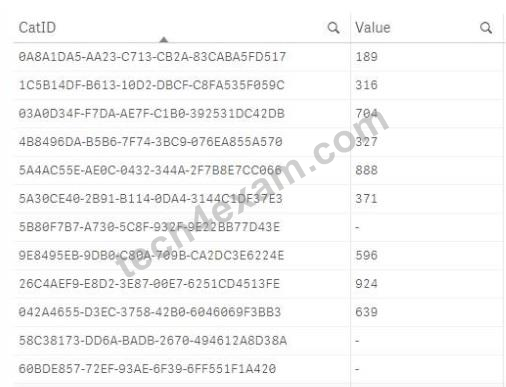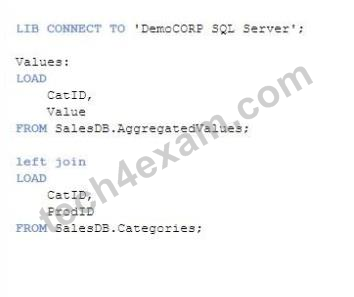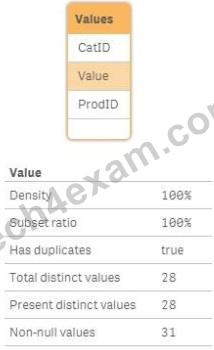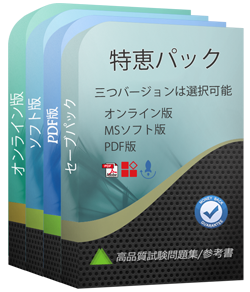QSDA2018テストエンジンはどのシステムに適用しますか?
オンラインテストエンジンは、WEBブラウザをベースとしたソフトウェアなので、Windows / Mac / Android / iOSなどをサポートできます。どんな電設備でも使用でき、自己ペースで練習できます。オンラインテストエンジンはオフラインの練習をサポートしていますが、前提条件は初めてインターネットで実行することです。
ソフトテストエンジンは、Java環境で運行するWindowsシステムに適用して、複数のコンピュータにインストールすることができます。
PDF版は、Adobe ReaderやFoxit Reader、Google Docsなどの読書ツールに読むことができます。
Tech4Examはどんな試験参考書を提供していますか?
テストエンジン:QSDA2018試験試験エンジンは、あなた自身のデバイスにダウンロードして運行できます。インタラクティブでシミュレートされた環境でテストを行います。
PDF(テストエンジンのコピー):内容はテストエンジンと同じで、印刷をサポートしています。
購入後、どれくらいQSDA2018試験参考書を入手できますか?
あなたは5-10分以内にQlik QSDA2018試験参考書を付くメールを受信します。そして即時ダウンロードして勉強します。購入後にQSDA2018試験参考書を入手しないなら、すぐにメールでお問い合わせください。
返金するポリシーはありますか? 失敗した場合、どうすれば返金できますか?
はい。弊社はあなたが我々の練習問題を使用して試験に合格しないと全額返金を保証します。返金プロセスは非常に簡単です:購入日から60日以内に不合格成績書を弊社に送っていいです。弊社は成績書を確認した後で、返金を行います。お金は7日以内に支払い口座に戻ります。
あなたはQSDA2018試験参考書の更新をどのぐらいでリリースしていますか?
すべての試験参考書は常に更新されますが、固定日付には更新されません。弊社の専門チームは、試験のアップデートに十分の注意を払い、彼らは常にそれに応じてQSDA2018試験内容をアップグレードします。
割引はありますか?
我々社は顧客にいくつかの割引を提供します。 特恵には制限はありません。 弊社のサイトで定期的にチェックしてクーポンを入手することができます。
更新されたQSDA2018試験参考書を得ることができ、取得方法?
はい、購入後に1年間の無料アップデートを享受できます。更新があれば、私たちのシステムは更新されたQSDA2018試験参考書をあなたのメールボックスに自動的に送ります。
あなたのテストエンジンはどのように実行しますか?
あなたのPCにダウンロードしてインストールすると、Qlik QSDA2018テスト問題を練習し、'練習試験'と '仮想試験'2つの異なるオプションを使用してあなたの質問と回答を確認することができます。
仮想試験 - 時間制限付きに試験問題で自分自身をテストします。
練習試験 - 試験問題を1つ1つレビューし、正解をビューします。
Qlik Sense Data Architect Certification Exam - June 2018 Release 認定 QSDA2018 試験問題:
1. Refer to the exhibit.
Each order can-have multiple products The data architect needs to make sure the Amount can be analyzed by Order Type and Product Category.
The Order Number field data always contains the Order Type in the first three characters Product. Product Category, and Sales Channel data are available in an Excel spreadsheet called "Categories" in the file PaperProducts xlsx.
Which two ways can the data architect use to make additions to the existing script and meet the requirements?
(Choose two.)
A)
B)
C)
D)
A) Option B
B) Option D
C) Option C
D) Option A
2. 
Refer to the exhibit.
A data architect is reviewing an app that is under development. The app has NOT been published All data has been validated in all charts and KPIs. The data architect notices that the data model has two fact tables with common field names that cause a synthetic join Which step should the data architect take to correct the data model without affecting the app?
A) Create a composite key in the Sales and Budget tables instead of loading Year Employee!^ and ProductID
B) Concatenate LOAD the data from the Sales and Budget tables to combine into a single table
C) Create a composite key in the Sales and Budget tables that consists of the Year, EmployeelDr and ProductID
D) Perform a mapping load for the Employees table and use ApplyMap in the Sales and Budget tables
3. The data model from an existing Qlik Sense app needs to be reused in another Qlik Sense app.
Which load strategy should a data architect use to transfer this data in the most efficient way?
A) Preceding load
B) QVD load
C) Binary load
D) Generic load
4. Refer to the exhibits.
A data architect needs to build a Project Management dashboard. The ProjectStatus table lists all indexes in the fields. Descriptions for the indexes are stored in a single Master table.
To build the dashboard, all descriptions should be in a single table:
Which function should the data architect use to meet this requirement?
A) PurgeChar
B) Keep
C) ApplyMap
D) Join
5. 


Refer to the exhibits
Business analysts report data issues in the Value field of a table since the latest reload of the data What is causrng this issue?
A) Some categories do NOT exist in the Category table
B) Null values in the source data
C) Hyphen characters (' -') in the source data
D) Pre-aggregated data is being used
質問と回答:
| 質問 # 1 正解: C | 質問 # 2 正解: D | 質問 # 3 正解: C | 質問 # 4 正解: C | 質問 # 5 正解: B |


 弊社は製品に自信を持っており、面倒な製品を提供していません。
弊社は製品に自信を持っており、面倒な製品を提供していません。



 -Kawai
-Kawai

